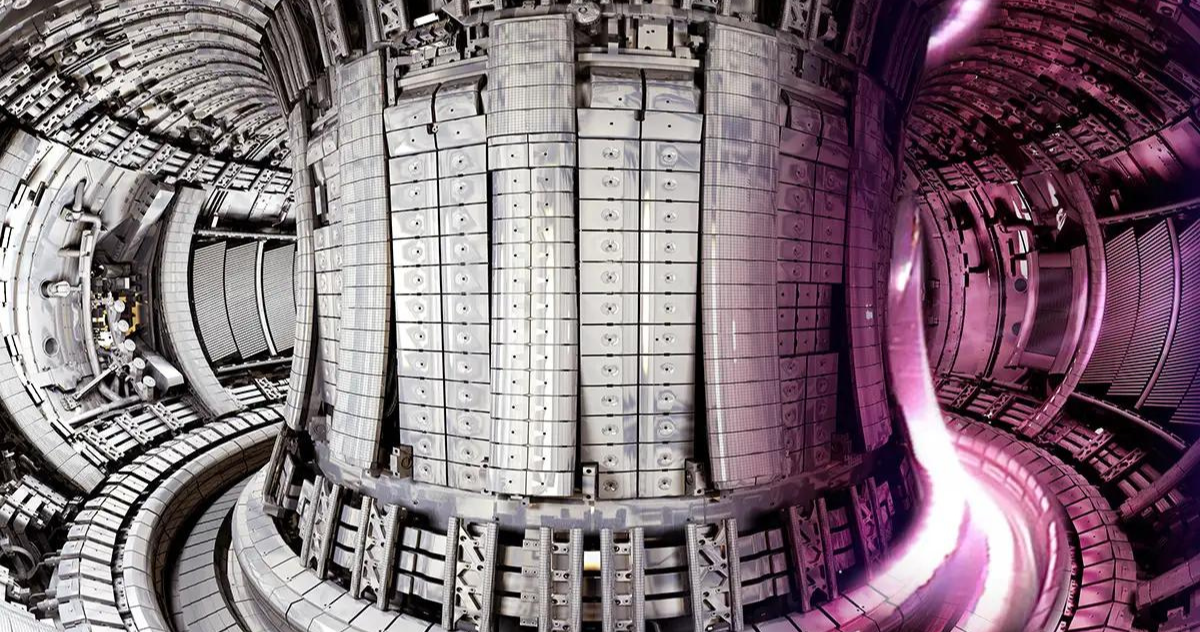UK (Parliament Politic Magazine) – Andrew Bowie, Britain’s Minister for Nuclear and Networks, announced in Washington the signing of an agreement between the UK and the US for collaborative efforts in nuclear fusion. This partnership involves sharing facilities, funding research, and establishing joint supply chains to develop the intricate fuels and materials essential for achieving fusion.
Mr. Bowie emphasized the UK’s aspiration to have a commercially viable fusion reactor “grid-ready” by 2040. He stated, “The UK and the US are global leaders in this technology, and by pooling our resources, we can attract new private sector investment. This innovative partnership will play a crucial role in transforming our fusion ambitions into reality.”
US and UK Forge Fusion Partnership to Combat Climate Crisis
David Turk, the deputy undersecretary at the US Department of Energy, expressed enthusiasm about collaborating with the UK “to advance fusion energy and work towards our shared objective of addressing the climate crisis.”
Fusion involves heating hydrogen atoms to extreme temperatures until they fuse, releasing substantial energy. This process, initially utilized in the development of the hydrogen bomb 70 years ago, theoretically holds the potential to generate an almost limitless supply of clean electricity if controlled.
However, practical implementation has been challenging because the temperatures required for fusion are up to 15 times hotter than the sun, making containment impossible with currently known materials. Successful fusion reactions can only occur when held within powerful magnetic fields.
The UK, once a prominent participant in the ITER fusion project at Cadarache in France, faced exclusion upon leaving the EU. The EU mandated that around 60 UK scientists leading the project adopt French nationality to retain their positions, resulting in a significant decline in the UK’s fusion research community.
US-UK Fusion Pact: Transforming Ambitions into Reality for a Greener Tomorrow
Further setbacks loom as the Jet fusion experiment at Culham in Oxfordshire, with 40 years of research history, is set to close by the year’s end. Recent efforts to rejoin ITER encountered obstacles a few weeks ago.
Presently, British fusion research is pivoting toward plans for a new tokamak, or fusion reactors, with the UK Atomic Energy Authority set to unveil designs next year. The proposed reactor aims to connect to the National Grid and achieve net energy production by 2040, potentially positioning the UK ahead of ITER in the fusion race.
The US and the UK have unveiled a “significant new partnership” in fusion technology, with the joint aim of addressing the climate crisis, according to officials.
This collaboration was formalized during a meeting in Washington between the US Department of Energy and the UK’s Department for Energy Security and Net Zero.
For decades, thousands of scientists and engineers have been dedicated to nuclear fusion research, seeking to replicate the process by which atoms fuse, generating energy similar to the sun and other stars. This energy can be converted into electricity.
Joint US-UK Fusion Announcement: A Pivotal Step Towards Net-Zero Economy
A groundbreaking development occurred in late 2022 when a team from the Lawrence Livermore National Laboratory in California achieved a “net energy gain” for the first time, producing more energy in a fusion reaction than was consumed to initiate it.
One of the key advantages of fusion is its lack of radioactive waste generation, setting it apart from other nuclear reactions.
Despite the optimistic outlook from fusion advocates who believe it has the potential to replace oil and gas with abundant carbon-free energy for societal needs, experts advise that this reality is still decades away.
In the recently formed US-UK partnership, fusion scientists from both sides of the Atlantic will join forces in research and development, exchanging knowledge and gaining access to facilities. The primary goal is to make fusion a commercially viable energy source.
Read More: Outage of Microsoft Azure Services in the UK and Europe Disclosed
Nuclear Energy’s Contribution to Biden’s Net-Zero Vision
Jennifer Granholm, the US energy secretary, declared last month that the United States aspires to establish a commercial nuclear fusion facility within the next decade. This initiative aligns with the nation’s broader strategy to transition from fossil fuels to cleaner energy sources.
Nuclear energy plays a pivotal role in the Biden administration’s objective of achieving a net-zero power sector by 2035 and a net-zero economy by the mid-century.
The joint announcement on Wednesday was delivered by David Turk, the deputy undersecretary at the US Department of Energy, and Andrew Bowie, the UK Minister for Nuclear and Networks.
Mr. Turk expressed anticipation about furthering the partnership with Minister Bowie in Washington to propel fusion energy, ultimately contributing to the shared goal of combatting the climate crisis.


